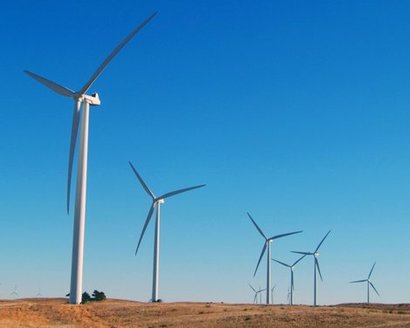
Wind farms are central to climate action, providing clean energy that significantly reduces carbon emissions. As governments strive to meet climate targets, wind energy’s role in decarbonizing power generation is more crucial than ever.
However, maintaining wind farms efficiently presents unique challenges. Historically, wind farms relied on reactive maintenance, addressing issues only after problems arose. This approach often led to costly downtime, impacting both turbine lifespan and energy production, particularly during periods of high electricity demand, typically during the winter months. Given the remote locations of many wind farms, these delays were often complex to manage, particularly when harsh weather conditions limited accessibility or extended repair times.
The drive for efficiency
As wind farms grow in size and number, the need for operational efficiency becomes vital. Technological advancements, such as real-time data analytics and machine learning, are playing a key role in driving this efficiency. These tools allow operators to continuously monitor turbine performance, optimizing energy production and reducing operational losses.
By analyzing data from turbine sensors, operators can adjust key parameters - such as blade angles - to maximize energy capture, even as wind conditions fluctuate. This real-time optimization ensures turbines operate at peak efficiency, minimizing energy loss and supporting a steady contribution to the energy grid. As global energy demands rise, this ability to harness wind power more effectively is essential to ensuring a reliable, scalable, renewable energy solution.
Predictive maintenance plays a crucial role in enhancing operational efficiency. By forecasting potential equipment failures, operators can schedule maintenance during periods of low wind, avoiding unnecessary downtime and keeping turbines operational during high-demand periods. This proactive approach not only minimizes disruptions but also extends the lifespan of turbines, reducing operational costs and resource-intensive repairs.
In addition to boosting efficiency, these technologies help reduce the environmental footprint of wind farms by minimizing energy waste and improving turbine longevity. By ensuring turbines run efficiently and addressing mechanical issues before they escalate, operators can decrease the need for frequent repairs and replacements, lowering resource consumption.
Studies show that wind energy produces around 11 grams of CO₂ per kilowatt-hour of electricity generated, compared to approximately 980 grams for coal and 465 grams for natural gas, making wind energy's carbon footprint significantly smaller.
Additionally, a wind farm can offset the carbon emissions produced during its construction and operation within just two years of spinning, effectively balancing out its entire 30-year lifespan when compared to thermal power plants, according to a new peer-reviewed study published in the Journal of the Royal Society of New Zealand. This aligns with broader sustainability goals, where reducing the carbon footprint of operations is just as critical as generating clean energy.
This way of working also allows for more strategic planning, reducing the need for emergency interventions. Operators can lower maintenance costs while ensuring consistent energy production - key factors in making wind energy a dependable part of the global energy mix.
Sustainability as a driving force
The sustainability benefits of optimizing wind farm operations go beyond cost savings. Consistent and efficient turbine performance means a more dependable source of renewable energy, crucial as the world seeks to move away from fossil fuels. By ensuring that wind farms contribute steadily to the energy grid, operators can help countries meet their renewable energy targets and reduce reliance on carbon-intensive energy sources.
Looking ahead, wind energy will continue to play a vital role in the global effort to achieve net-zero emissions. As the industry grows, integrating advanced technologies such as predictive maintenance and real-time data analytics will be key to ensuring wind farms remain reliable, cost-effective, and environmentally-friendly energy solutions.
About the Author: Gerado Muñoz is the Solutions Manager for AspenTech.

